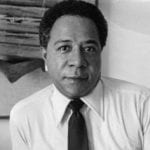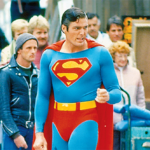 Animals
Animals  Animals
Animals  Weird Stuff
Weird Stuff 10 Weird Things People Used to Do at New Year’s
 Our World
Our World 10 Archaeological Discoveries of 2025 That Refined History
 Weird Stuff
Weird Stuff 10 Fascinating Facts You Might Not Know About Snow
 Miscellaneous
Miscellaneous Top 10 Things Crypto Was Supposed to Change & What Actually Did
 History
History 10 Huge Historical Events That Happened on Christmas Eve
 Music
Music 10 Surprising Origin Stories of Your Favorite Holiday Songs
 History
History 10 Less Than Jolly Events That Occurred on December 25
 Weird Stuff
Weird Stuff 10 Funny Ways That Researchers Overthink Christmas
 Politics
Politics 10 Political Scandals That Sent Crowds Into the Streets
 Animals
Animals 10 Species That Refused to Go Extinct
 Weird Stuff
Weird Stuff 10 Weird Things People Used to Do at New Year’s
 Our World
Our World 10 Archaeological Discoveries of 2025 That Refined History
Who's Behind Listverse?

Jamie Frater
Head Editor
Jamie founded Listverse due to an insatiable desire to share fascinating, obscure, and bizarre facts. He has been a guest speaker on numerous national radio and television stations and is a five time published author.
More About Us Weird Stuff
Weird Stuff 10 Fascinating Facts You Might Not Know About Snow
 Miscellaneous
Miscellaneous Top 10 Things Crypto Was Supposed to Change & What Actually Did
 History
History 10 Huge Historical Events That Happened on Christmas Eve
 Music
Music 10 Surprising Origin Stories of Your Favorite Holiday Songs
 History
History 10 Less Than Jolly Events That Occurred on December 25
 Weird Stuff
Weird Stuff 10 Funny Ways That Researchers Overthink Christmas
 Politics
Politics 10 Political Scandals That Sent Crowds Into the Streets
10 Entertainers Who Stole Their Iconic Personas
Sometimes, to be successful as an entertainer, it’s not enough just to be brilliant at your craft—you have to be unique and memorable as a personality, as well. Our most beloved artists are often not the most technically skilled, simply the most interesting. It turns out that in some cases, however, their genius lies only insofar as recognizing genius and then taking it for themselves.
10 Liberace
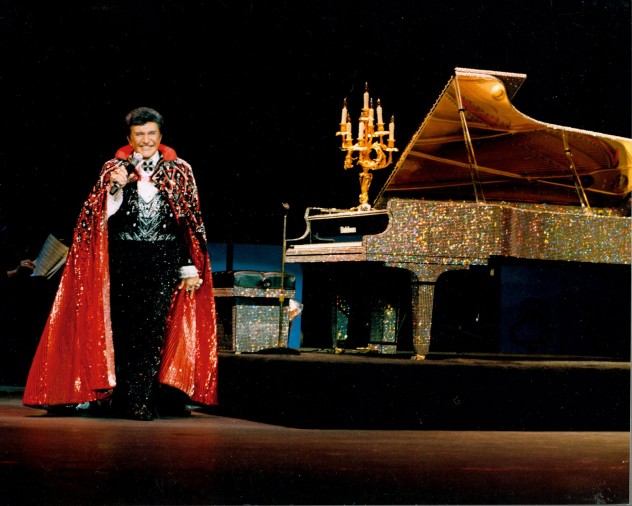
Quick, name an effeminate entertainer with a flair for fashion and a fondness for candelabras. Now, name another. Don’t think there is one? Think again.
When the future Vegas strip staple burst onto the scene in the ’50s, he was queer in every sense of the word. In a culture that still demonized homosexuals, Liberace managed to become a household name, with his own television show and sold-out concerts around the world. His nonthreatening demeanor and friendly face excused, to the public, his frilly get-ups and affinity for the fabulous things in life. It was a breakthrough moment in cultural acceptance, and it was all due to his unique persona. But, was it really?
Wrestling fans know better. One of those fans was Liberace’s beloved mother, who he says once received a lavender turkey from wrestler Gorgeous George. Why lavender? It was his signature color. In fact, Gorgeous George’s ringside theatrics shared a lot of similarities with Liberace’s stage performances. Also known as the Human Orchid, George’s role was as an effeminate villain, playing to hetero-normative fears with his gaudy robes and impeccably styled hair. One of his standard gimmicks was carrying a candelabra into the ring.
Was it a coincidence that the son of one of George’s greatest fans would soon be known for the same routines? George didn’t think so. According to him, Liberace “stole his whole act“. If Liberace wasn’t that original, at least it can be said that he took what was intended to be a menacing symbol and removed its claws before donning it, challenging prejudice rather than reinforcing it.
9 Muhammad Ali
It doesn’t get more disparate than Muhammad Ali and Liberace as far as public figures go, but incredibly enough, they ripped off the same guy. That’s right, the Greatest, the People’s Champion, who floats like a butterfly and stings like a bee, also got his schtick from the wispy wrestling star, Gorgeous George.
At heart, the man born Cassius Clay was a humble person, thoughtful, religious, and soft-spoken. After meeting Gorgeous George, however, he had an epiphany. You see, while the Human Orchid might have been a pansy slip of a man, he was also a cocky, sniveling villain. George’s ability to whip the crowd into a furious frenzy left a deep impression upon Clay, and he knew immediately that he needed to follow suit to get the attention he needed to become a superstar. He studied George’s mannerisms and incorporated them into the swaggering Ali persona, created with the intention of making people hate him. “They hated Gorgeous George, but they paid a hundred dollars for a ringside seat,” he said incredulously. “I said, ‘Hmmm, this is a good idea, this guy is getting rich,’ so I started talking: ‘I am the greatest! I cannot be beat! I’m too pretty to be a fighter!’ ” Commenting on his personal life versus his public image, he admitted, “At home I am a nice guy but I don’t want the world to know. Humble people, I’ve found, don’t get very far.”
8 David Bowie
When David Bowie burst onto the scene in the early ’70s, he was like nothing the world had ever seen before. Heavily made up, covered in glitter, with skinny, white limbs swathed in colorful leather and spandex, he was like an alien from whatever planet your grandma’s sofa came from. Combined with a fresh glam-punk-pop sound, he was just what a world weary of love beads and tie-dye needed. Surely, such a unique style was born exclusively from his own creative genius, right?
Not exactly. When Bowie was starting out in the ’60s, he was less spider from Mars and more Paul McCartney. Then known as Davey Jones, before it turned out that even his name was derivative, he was hugely influenced by the Beatles, as heard in early recordings and interviews. Note the bouncy Merseybeat sound, signature Beatles haircut, and clean-cut suit and tie.
Two things happened that resulted in the bizarre Bowie persona: He discovered the Velvet Underground, and embarked upon an epic bromance with Iggy Pop. Bowie fell in love with Lou Reed’s dizzy songwriting style and Iggy’s outrageous cross-dressing theatrics, so he decided to steal both. Explaining his vision, he declared that Iggy’s persona, combined with Reed’s songwriting, would create the “ultimate pop idol.” His music got rougher and raw, and he adopted Iggy’s feathered mullet and androgynous outfits. Even his new alter ego’s name, Ziggy Stardust, was an amalgamation of a singer called the Legendary Stardust Cowboy and a tailor called Ziggy’s, which Bowie liked because it sounded like Iggy. It turns out one of the most original artists of the twentieth century is little more than an exquisite corpse.
7 Stevie Nicks
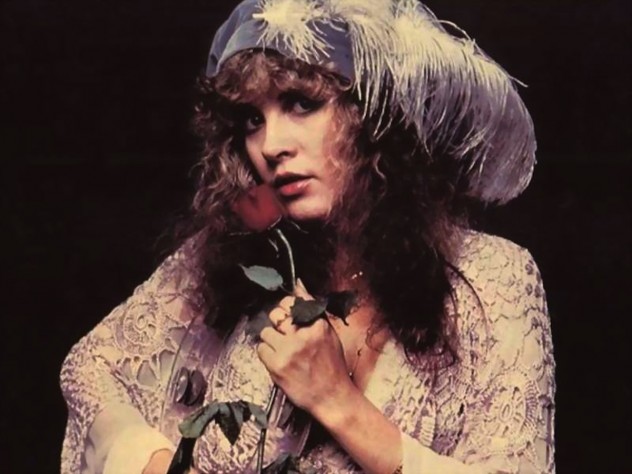
Fleetwood Mac’s husky-voiced singer is instantly recognizable to anyone who somehow manages to remember the ’70s. Her combination of California gypsy and mysterious voodoo lady—a head of cascading blonde hair perched on top of layers upon layers of flowing fabric, supported by impossibly tall boots—was refreshingly unique among a sea of bell-bottomed jeans.
It wasn’t always that way, however. Back in the day, Nicks, performing with partner Lindsey Buckingham, was known as Buckingham Nicks, because apparently musical genius doesn’t translate to creative band names. It didn’t translate to creative style, either: Stevie’s got the same frizzy, dark curls and stonewashed jeans that were the staple of hippie girls who harmonized over their boyfriends’ acoustic guitars. That’s right: Before their Fleetwood Mac makeovers, the coke-fueled rockers used to be an inoffensive folk duo, right down to the album cover designed to show off their body hair.
Everything changed when Buckingham Nicks opened for Janis Joplin in 1968. Stevie noticed a woman in the audience wearing a chiffon skirt and suede boots and was instantly taken with the style, which just happened to dovetail nicely with the edgier sound she would hone with Fleetwood Mac. She appeared draped in black chiffon in performances of Rhiannon, Fleetwood Mac’s lilting ode to an old Welsh witch. And that’s the story of how an anonymous Janis Joplin fan was responsible for the most iconic image in the history of women in rock.
6 Lady Gaga
Lady Gaga has been accused of ripping off plenty of people, from Madonna’s girly dance club sound to Marilyn Manson’s goth shock antics. There’s one person, though, who may be responsible for more of her unique style than anyone, and she isn’t famous.
In 2010, photos and video surfaced of a singer named Lina Morgana, who looked and sounded suspiciously similar to Lady Gaga and who was just starting to make waves with her outrageous performances. According to Morgana’s mother, boyfriend, and producer, Rob Fusari, who introduced the women, Morgana and Gaga were friends and frequent collaborators until Morgana’s suicide in 2008. It was she, they said, who pioneered Gaga’s signature fashion and sound. Morgana’s boyfriend said that when he saw Gaga perform, “it was like looking at a ghost.”
Their evidence is pretty compelling. The above video is from a 2006 performance and shows a very different Gaga: She has long, plain, dark hair, is wearing a pink dress, and croons a simple piano ballad. On the other hand, a video for a song called “Wunderland” by Lina Morgana—and featuring a verse from Lady Gaga—is much more similar to the songs Gaga is famous for. Photos of Morgana with a blonde wig draped in movie-star satin and crazy punk lingerie with a spiky wig bear an uncanny resemblance to the outfits we’ve seen from Gaga. Such a willingness to blatantly steal from dead people almost makes her more respectable, in the way you respect the voodoo priest who can steal your soul.
5 R. Kelly
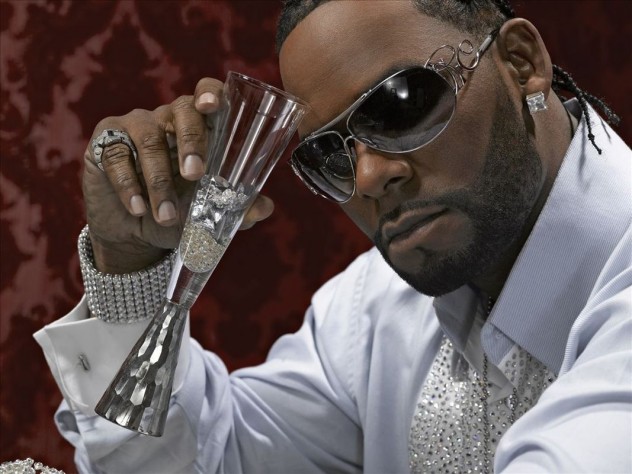
R. Kelly has seen his share of troubles lately, but back in the late ’90s, he was the official King of R&B. Helped along by his inescapable single from the Space Jam soundtrack, “I Believe I Can Fly,” his smooth melodies and signature style of a shaved head, sunglasses, and classy suits and vests became instantly recognizable.
Except it wasn’t his style, according to Aaron Hall, a singer with whom Kelly collaborated on songs like “U Will Know” and “Heaven’s Girl” just before hitting it big. The claim first came to light when Kelly’s and Hall’s contemporary, Trey Songz, stated in a 2010 interview that “R. Kelly took Aaron Hall’s whole style. Two albums straight.” Hall went on the record later that year, commenting about Songz, “I’m so glad he got R. Kelly by the headlock, but the King of R&B? Nobody can touch my vocals.”
Photos of Hall from the early ’90s, such as the cover of his 1993 album, The Truth, are indeed eerily reminiscent of the style Kelly would adopt later that year. Hall isn’t mad, though, stating, “You should never get mad when someone copies your style; you should feel flattered because everyone knows where they got it from.”
4 Rick Ross

Gangsta rapper Rick Ross rose to fame in the late 2000s, hailed by MTV as the hottest MC in the game in 2012. He presented himself as a mafia don, clad in white suits and not so subtly inviting the listener to compare him to Scarface by sampling its theme song and modeling his music videos after the look of the film. He raps about the typical gangster lifestyle—drug running, hustling the streets, etc. Too bad it was entirely made up.
It turns out that not only does the man, born William Roberts II, actually know precisely jack about dealing drugs, he used to be a correctional officer. According to the real Rick Ross, William Roberts is more full of baloney than an Oscar Meyer factory. That’s right, the real Rick Ross—the one who actually is a drug kingpin and currently serving time in prison for his role in the crack craze of the ’80s. Freeway Ricky Ross, as he’s known in full, has called out the rapper for stealing his name and back story and sued him for identity theft.
The hip-hop community, famous for priding itself on keeping it real, was none too pleased about the revelation. Ice-T called Ross out personally to BET, saying, “Rick Ross stole a n—a’s name. He thinks he’s (Freeway) Rick Ross, he thinks he’s Larry Hoover, he thinks he’s Big Meech, he thinks he’s MC Hammer, he thinks he’s Tupac. Like, who the f—k are you really, dude?”
3 Bob Dylan
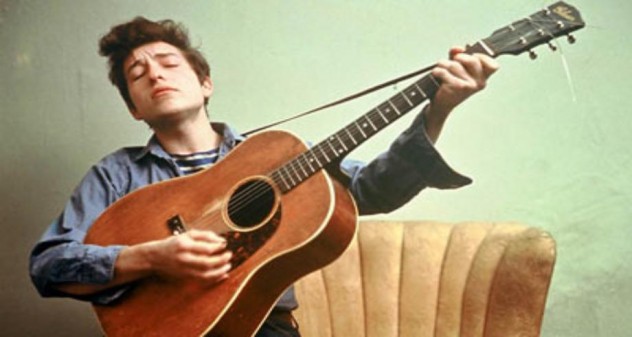
As this entire list shows, it’s one thing to be influenced by a colleague. It’s quite another to take their whole schtick and run with it.
In the ’60s, Bob Dylan hit New York like, well, a hurricane, with a guitar on his back and a harmonica around his neck. He roamed like a troubadour, and his simple compositions, backed by lyrics about plight and change, resonated with the idealistic youth of Greenwich Village. He was hailed as the voice of his generation, and as girlfriend Joan Baez put it, the original vagabond. But it turned out he was about as original as a photocopy.
When the former Robert Zimmermen started playing music in the ’50s, he was way more Elvis than Kerouac. His chief influence was Little Richard, and he wore his hair in a pompadour and played the over-styled R&B that was popular at the time. Everything changed in 1960, when he read Woody Guthrie’s autobiography, Bound for Glory. Known as “The Dust Bowl Troubadour,” Guthrie had an unkempt mound of frizzy curls, wore simple button-up shirts, slung a guitar marked “this machine kills fascists,” and played simple folk songs about poverty and injustice. Sound familiar?
Dylan intentionally began imitating Guthrie’s style and mannerisms, and it was to meet Guthrie that Dylan came to New York in the first place. Sadly, when he found his idol, it was in the Greystone Park Psychiatric Hospital, where Guthrie lay dying. Dylan visited Guthrie often until the latter’s death in 1967, and they became great friends. So, who knows, maybe Guthrie gave Dylan his soul of his own volition.
2 James Franco
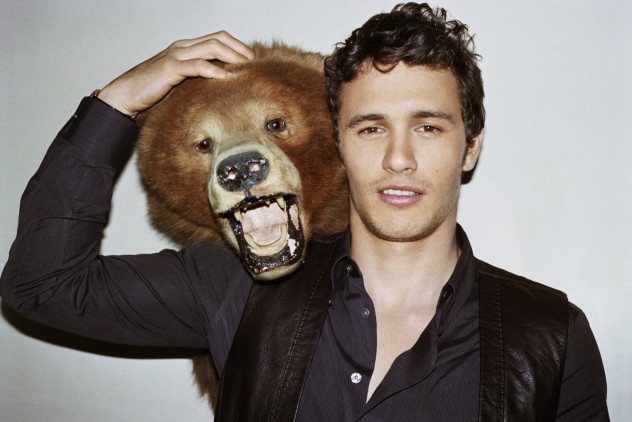
Sometimes even people whose job it is to wear a different personality every day can create one so different from how we normally see them that it’s instantly memorable, aka the Heath Ledger effect. James Franco pulled it off with stunning results in this year’s film, Spring Breakers, with his starring role as gangsta rapper, Alien. Franco is generally a Johnny Depp–type, sort of a grunge pretty-boy, but when he appeared on screen with his hair in cornrows, heavily tattooed, wearing Hawaiian shirts, and spouting slang, audiences were charmed.
Southern rapper Riff Raff, however, was not so pleased. Riff Raff claims that Franco ripped off not only his look, but also his catchphrase, in the famous “Look at my s—t” scene. Photos of the rapper next to Franco’s character in the movie are nearly identical, from the unusual clothing and hairstyle, the distinctive tattoos, right down to the white-framed sunglasses. A video of Riff Raff uploaded months before the movie’s release shows the rapper flaunting his possessions in exactly the same manner as Franco’s monologue from the film. Riff Raff has sued the producers of Spring Breakers for misuse of his likeness, and claims to have settled for an undisclosed amount.
1 Denis Leary
Comedians can be ripped off as well, and none more so than Bill Hicks. While joke theft is a huge problem in the industry, about which comedians are very vocal, rarely does anyone have the audacity to straight-up lift an entire personality.
But that’s exactly what Denis Leary did. He skyrocketed from local gigs and MTV appearances to national fame after his 1993 comedy album, No Cure for Cancer, left audiences rolling with laughter. His leather-jacketed, cynical, chain-smoking, rock-and-roll-loving persona resonated with an audience coming down from ’80s cheese. Too bad he bought it wholesale from Hicks.
It wasn’t just his look and mannerisms that Leary copied, either. No Cure for Cancer contains huge swaths of Hicks’ material, sometimes word for word. Hicks, needless to say, was furious. He and Leary were good friends in their up-and-coming comic days, and he didn’t find out Leary had been stealing from him until he heard the bestselling album. He was quickly embittered, quipping soon after that he actually stole Leary’s act, but he “camouflaged it with punchlines,” adding, “to really throw people off, I did it before he did.”
Hicks wasn’t the only one who noticed, either—Leary’s theft is openly acknowledged among his comedy colleagues. Hicks died of cancer a year after Leary’s breakthrough album, but he is still remembered. At Leary’s 2003 Comedy Central Roast, another comedian joked that there was a present for Leary backstage from Hicks: a carton of cigarettes, with a note that said “Wish I had gotten these to you sooner.”
Manna writes and wrongs from sunny Portland, Oregon. Find her writing here and her tweeting here.
